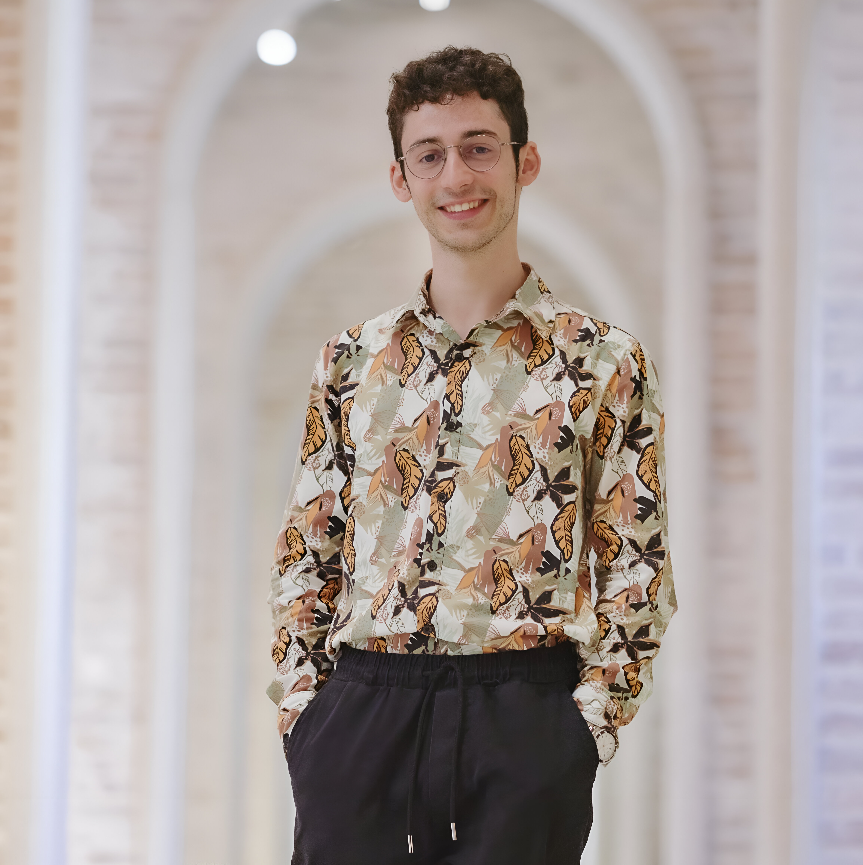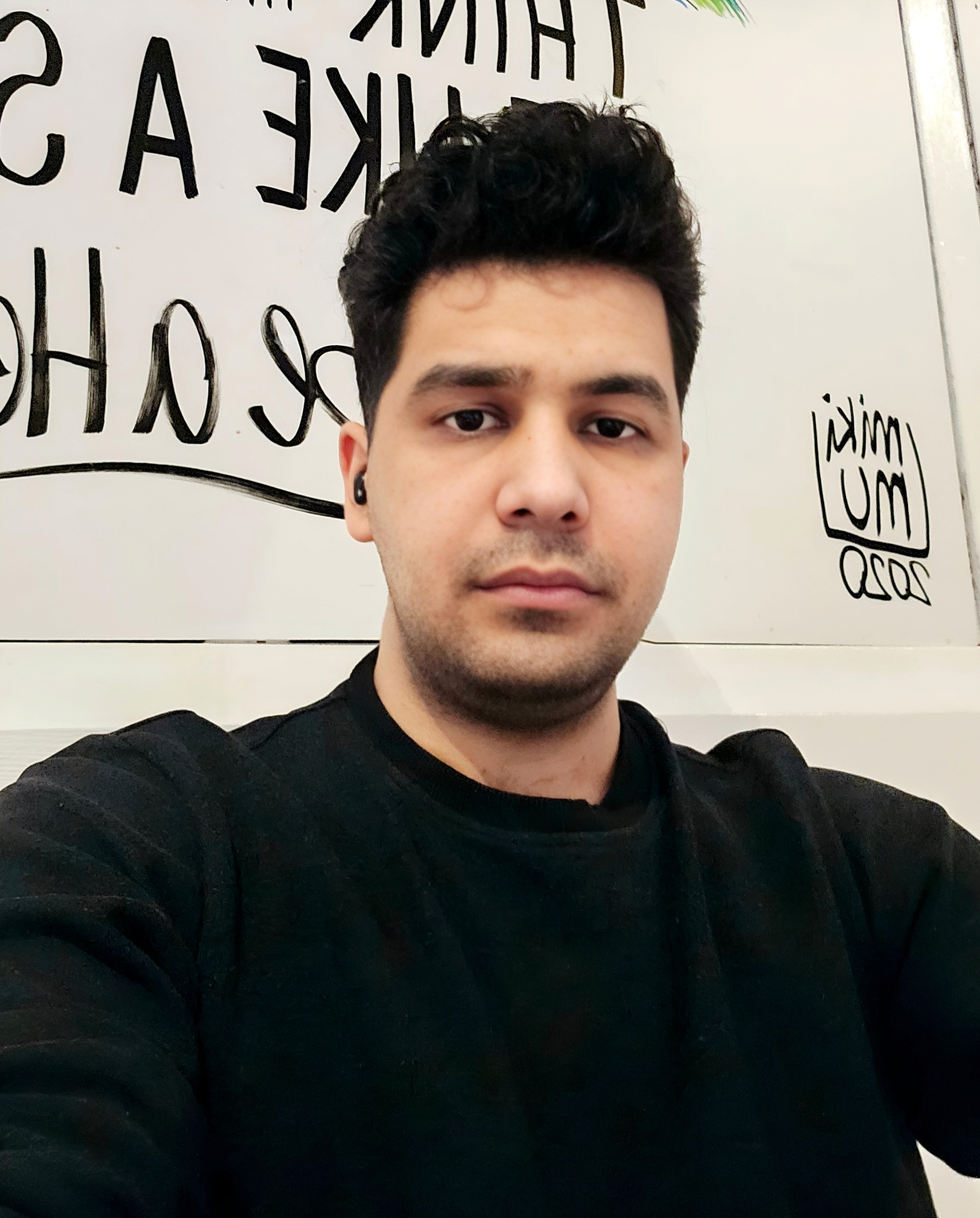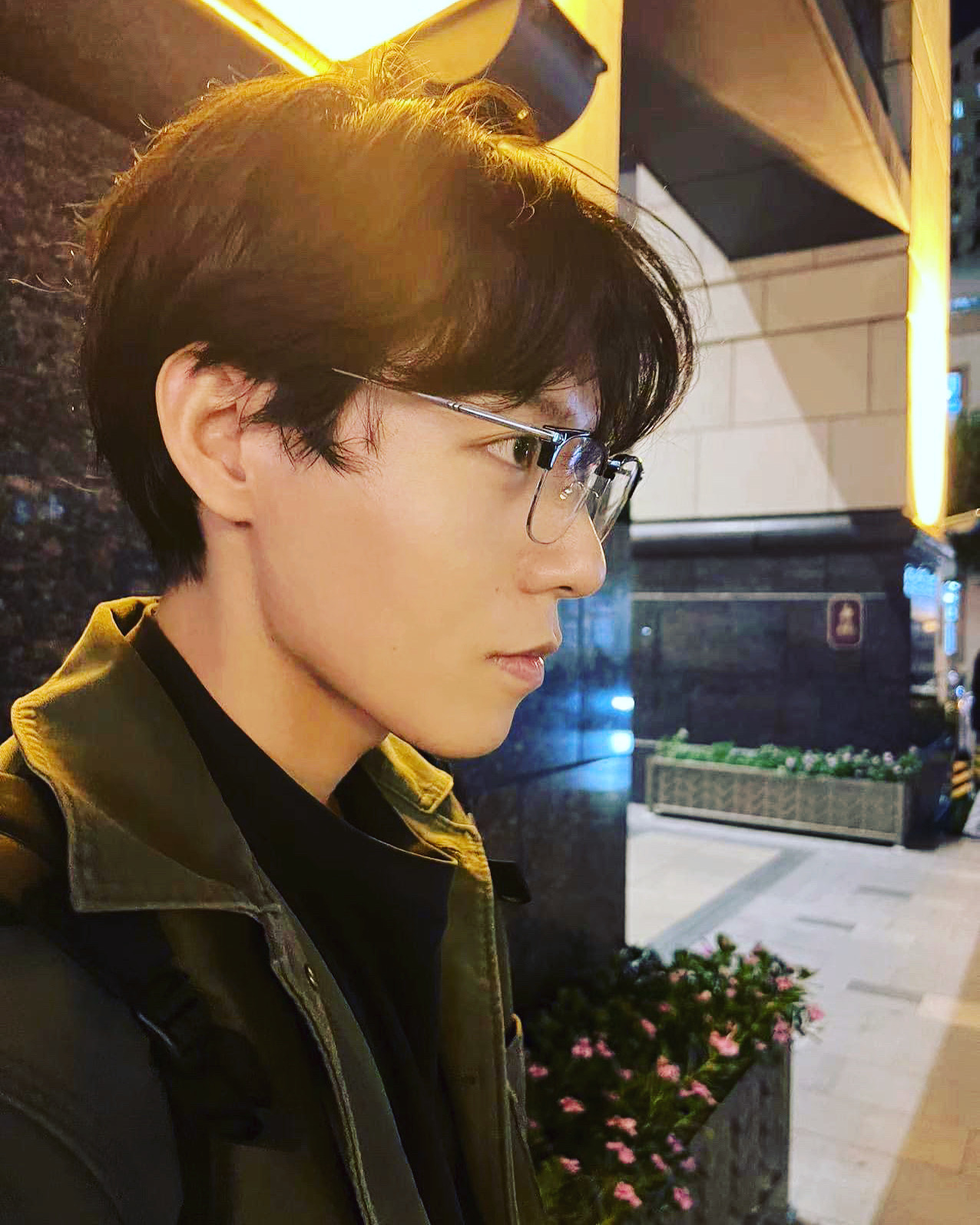Story
The story-based narrative provides a more literary approach to exploring the content, weaving together historical facts, cultural insights, and personal experiences into a cohesive narrative.
Unveiling the Hidden Cultural Network of a Mountain Village
Vallecupola is a small mountain village in the centre of Italy. Hamlet of Rocca Sinibalda (RI), it is set in a geographical region called Sabina. Full of art and history, it hosts a library house museum devoted to the poet, writer, sculptor and etruscologist Angelo Di Mario. Moreover, it inspired and became the main setting of a short story named after it and finalist at Premio Campiello Giovani 2024, one of the most important Italian literary prizes.
Vallecupola Ecosystem is a project by a group of students at Digital Humanities and Digital Knowledge Master Degree at the University of Bologna, aiming to unveil its hidden value and its connections with a variety of artistic contents, showing how also a small village can become a centre of a big cultural framework. The project, which gives birth both to a small "knowledge base" and a simple "virtual exhibition", leverages the principles of Linked Open Data and offers to the user a full experience, carefully thought for various target audiences to allow anyone to get inside the network around Vallecupola.
To get inside Vallecupola Ecosystem.
After a quick presentation of the items contained in the exhibition, the documentation is divided as follows:
The exhibition features a carefully curated collection of items that represent the cultural richness and historical significance of Vallecupola and its surrounding ecosystem. Each item has been selected to tell a part of the story that connects this small mountain village to broader cultural and artistic networks.

A video of the village in snow that opened a music event in Rocca Sinibalda.

Story inspired to Vallecupola and set in the village, finalist at Campiello Giovani 2024 Prize.
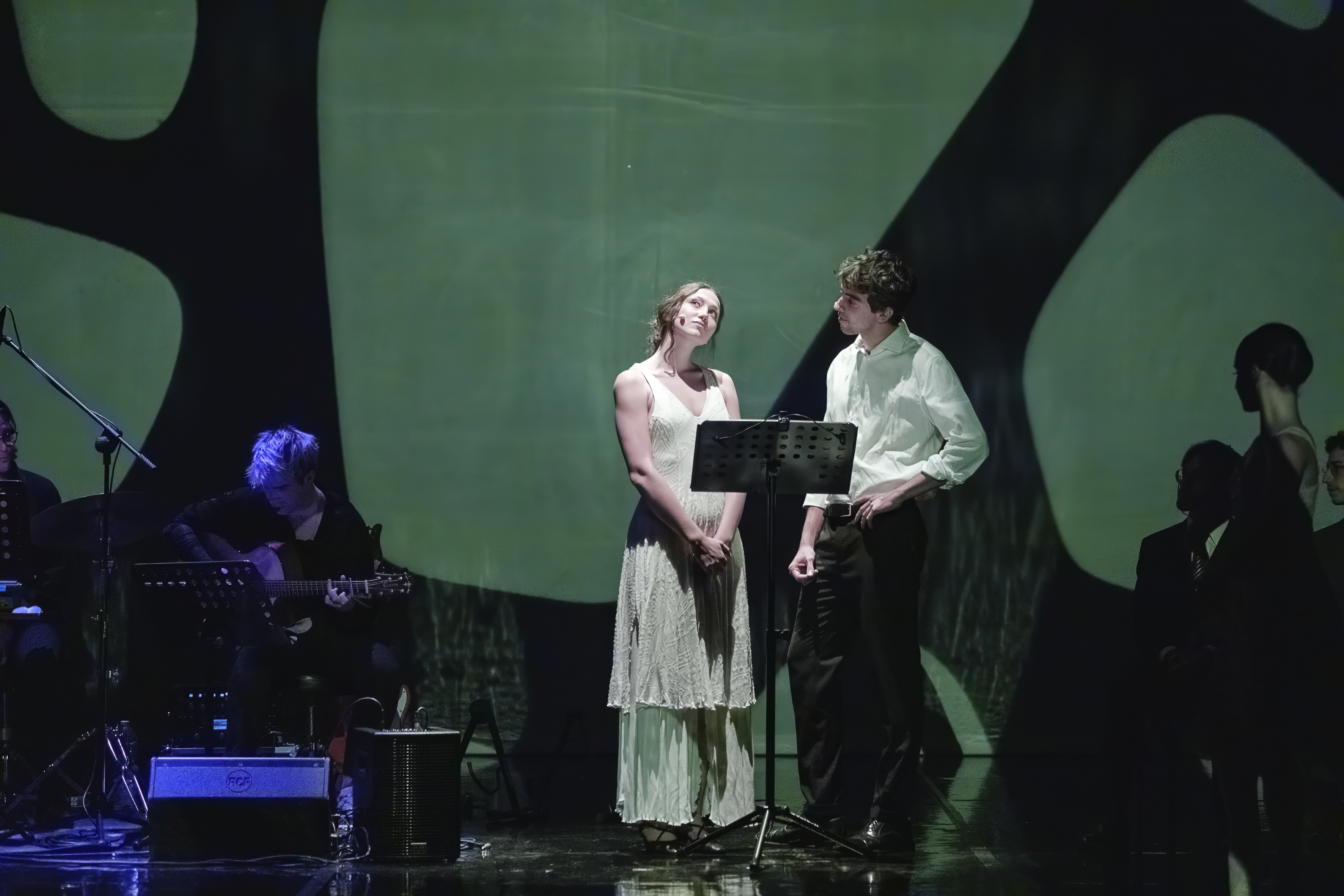
Theatrical event capturing the spirit of the village. Inspired to Vallecupola Story.
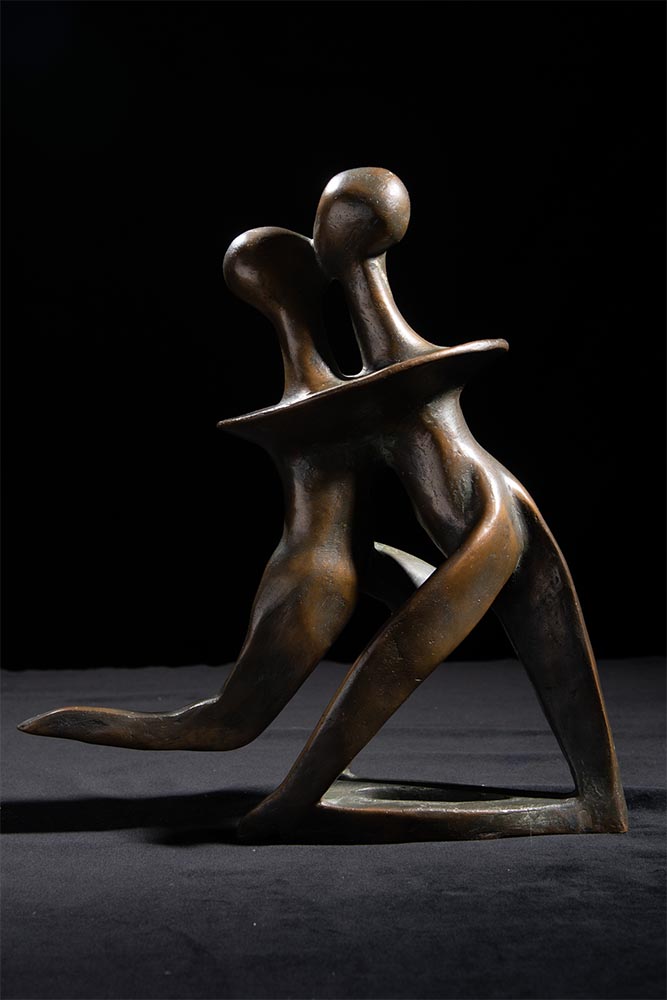
Energetic dancers in motion, representing a cultural snapshot.
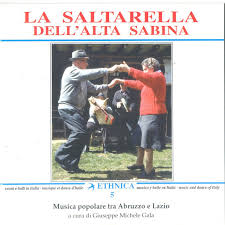
Traditional dance formation evoking rural festivities.

Glass jar used for hair cream, symbol of personal care history.
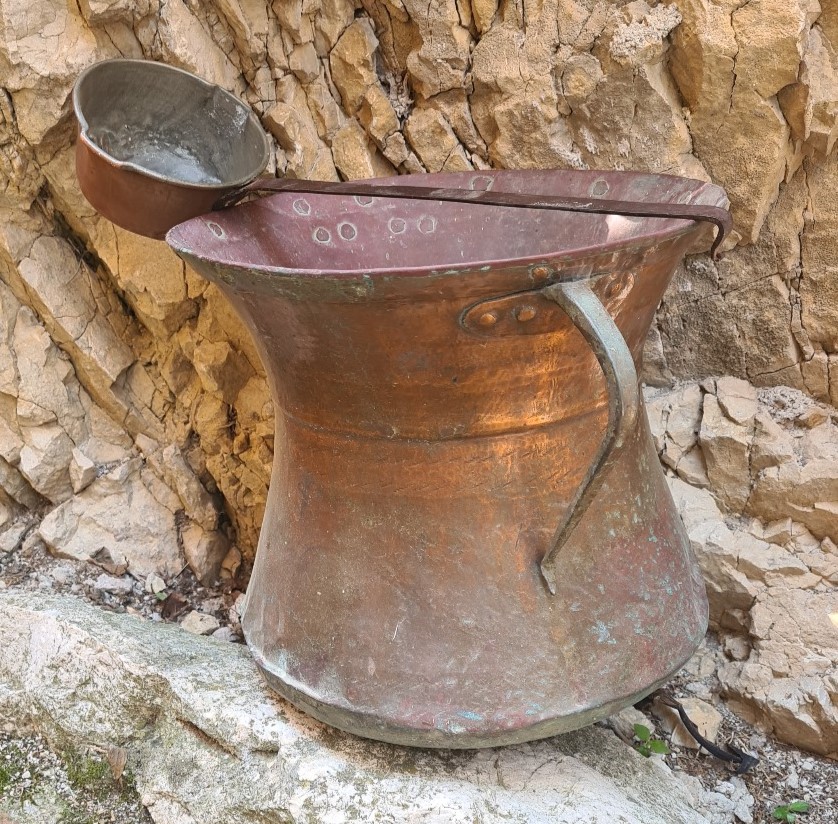
Traditional container used for carrying water.
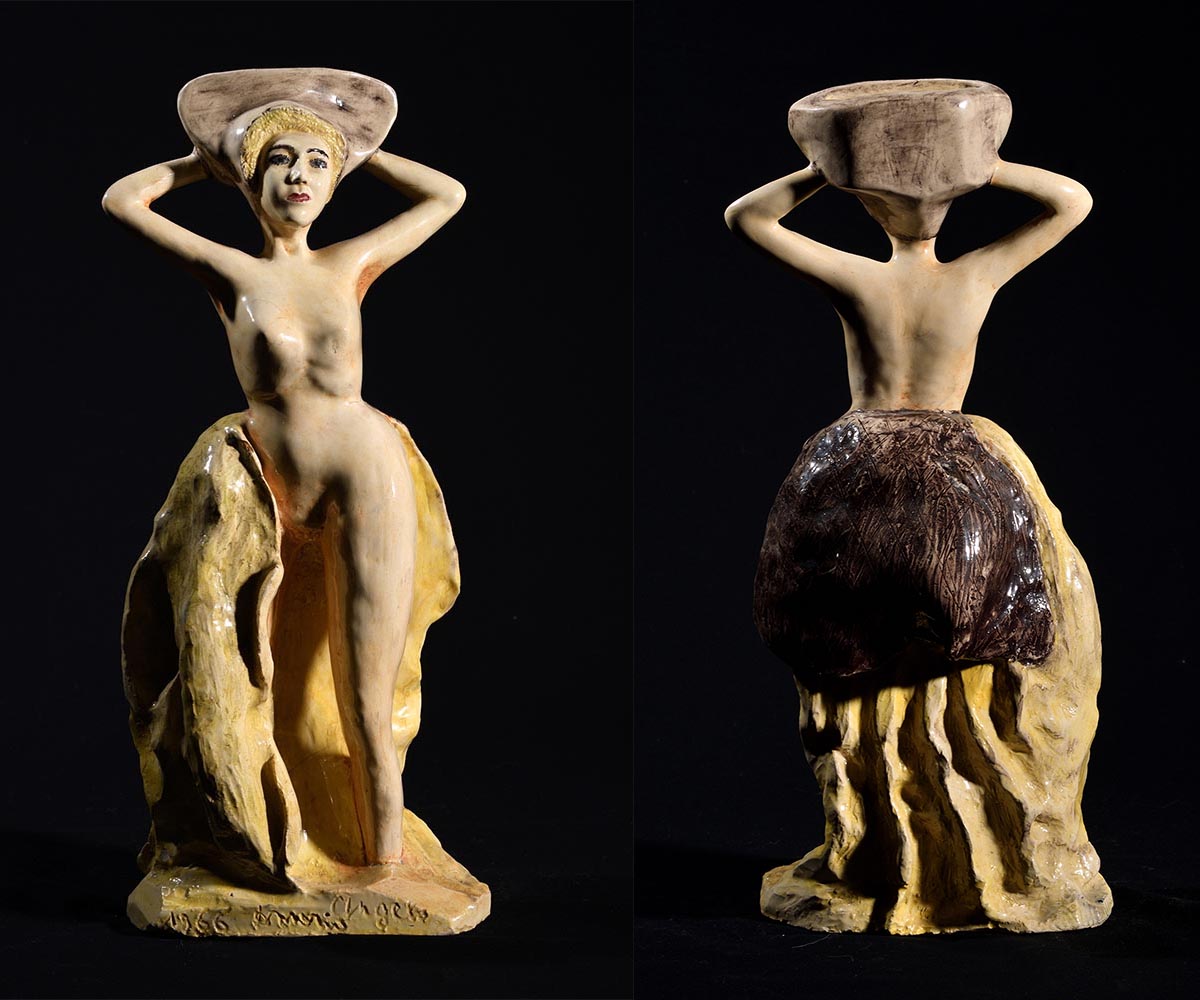
Portrait of a woman, revealing grace and dignity.

Romantic 19th-century painting near a fountain by Van Bree.
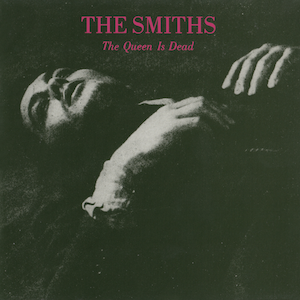
Song about death and literature. Mentioned in the story, in Vallecupola graveyard.
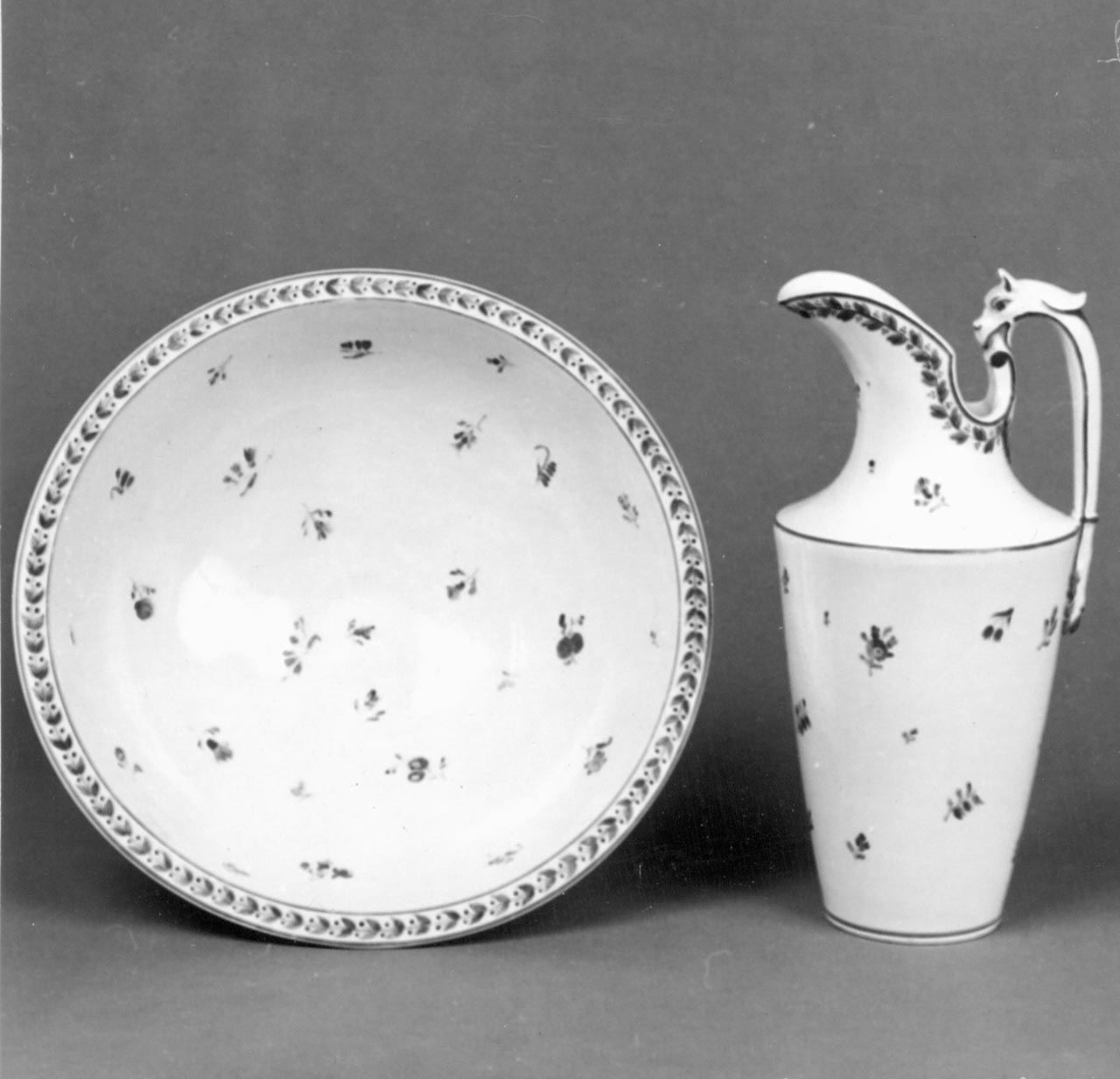
A small domestic basin, typical of old Italian daily life.
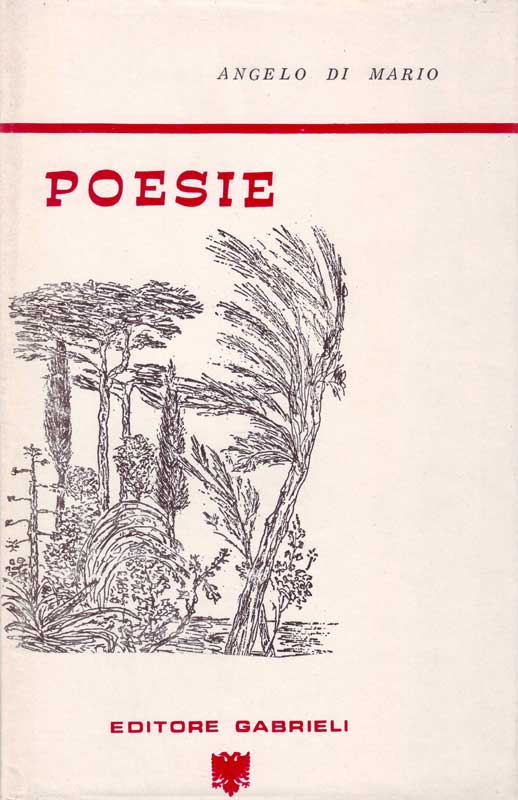
A collection of poems by Angelo Di Mario reflecting the emotions and landscapes of rural life.

Historic landscape painting of Rocca Sinibalda Castle by Paul Bril.

Modern reinterpretation of the Etruscan solar deity by Agapito Miniucchi (Rocca Sinibalda), blending myth and performance.

A vintage postage stamp, marking time and memory.

Historical Italian coin, emblem of past national currency.
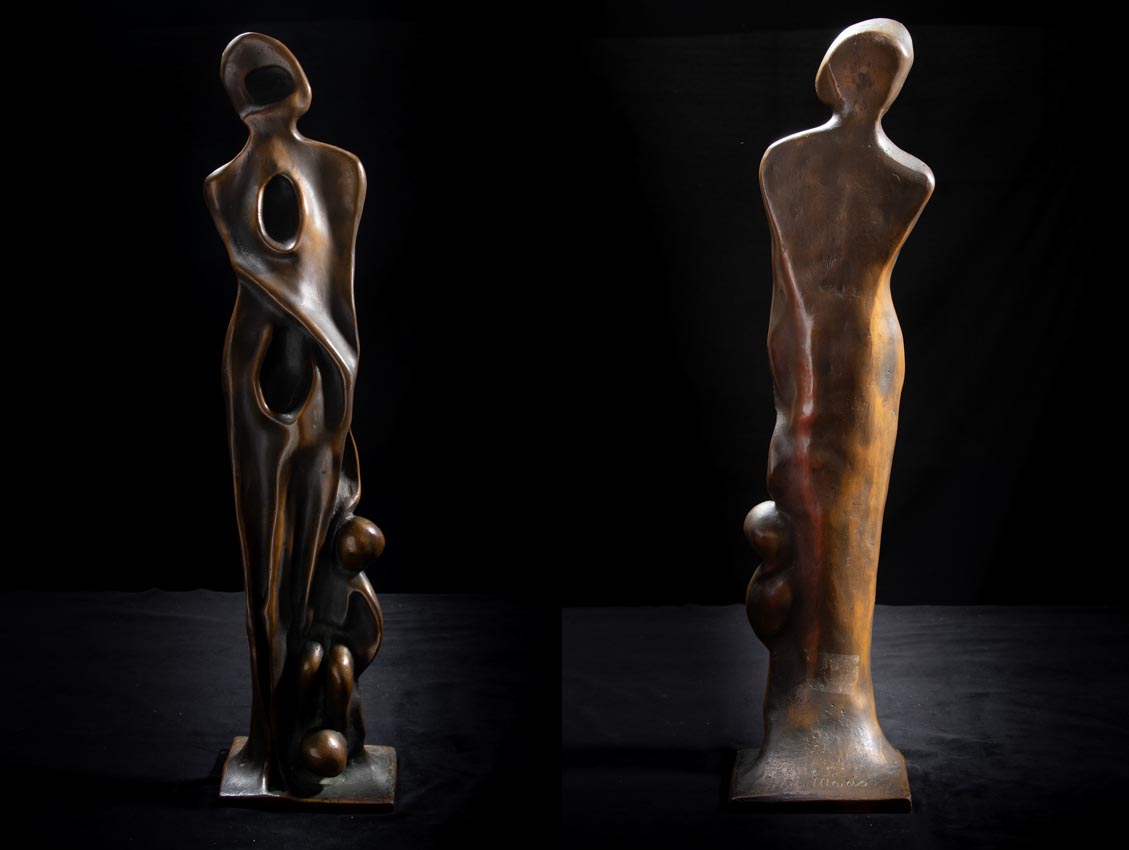
A tender family moment between grandfather and grandchild, capturing generational warmth.
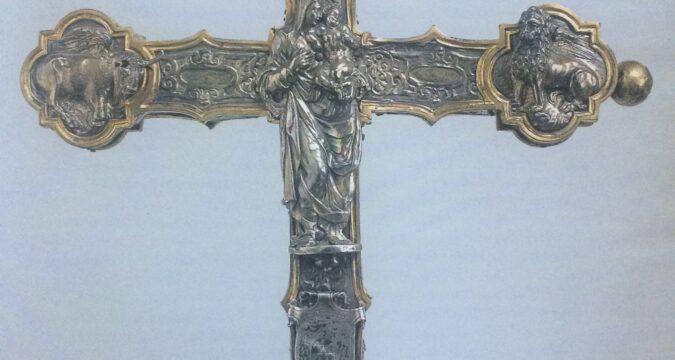
A processional cross with intricate detail, symbolic of local religious heritage.

Carbide lamp, once a staple source of portable light.
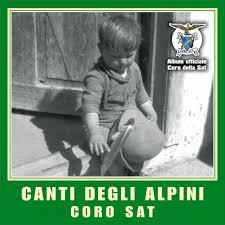
Symbolic bouquet tied to Italian folk heritage and songs.
The knowledge management strategy for the Vallecupola Ecosystem project is built upon a comprehensive framework that ensures systematic organization, representation, and accessibility of cultural data. Our approach combines traditional archival methods with modern digital humanities techniques.
As a first step, it was necessary to shape the knowledge domain, connecting the selected items. In order to show the interconnections between the objects, it was created a graph made of nodes and edges labelled in natural language, explicitly describing the important links between the items. Of course, only the most meaningful features and relations were chosen. The graph resembles a spider web, making it a small dense "knowledge graph", representing real instances and their meaningful bonds.
For the reader, it will be sufficiently easy to follow the various paths that bring from one object to the other, understanding the density and relevance of the cultural framework built all around Vallecupola.
In this theoretical model, not only can we see the items themselves, but also some extra entities necessary to connect them (they are basically intermediate nodes).
In the following reproduction of the theoretical model:

Our conceptual model provides a structured approach to representing the complex relationships between people, places, objects, and events within the Vallecupola ecosystem. It serves as the foundation for all subsequent data modeling and representation efforts.
Starting from the theoretical model, containing the individuals of the knowledge domain, put in relation between each other, it was possibile to elaborate a "conceptual model" by converting the previous into a more abstract level of representation. We collapsed the various individuals in classes, grouping similar ones, also based on their common features.
The result is a schema made of 11 classes, of which:
dcmitype:Text for collections, poems, stories;crm:E24_Physical_Human_Made_Thing for various objects and artifacts;schema:VisualArtwork for paintings and stamps;fabio:MovingImage for videos;schema:Sculpture for sculptures and installations;fabio:MusicalComposition for songs and musics;frbroo:F31_Performance for stage performances;crm:E53_Place for villages, hamlets and locations in them;crm:E21_Person for people, artists;schema:Museum for museums holding some items;skos:Concept for subjects represented or topics conveyed by the cultural items.
Actually, also some extra entities have classes dcmitype:Text (scenes of the story), crm:E24_Physical_Human_Made_Thing (objects mentioned in the story) and fabio:MovingImage,
because they were useful to better express the connections.
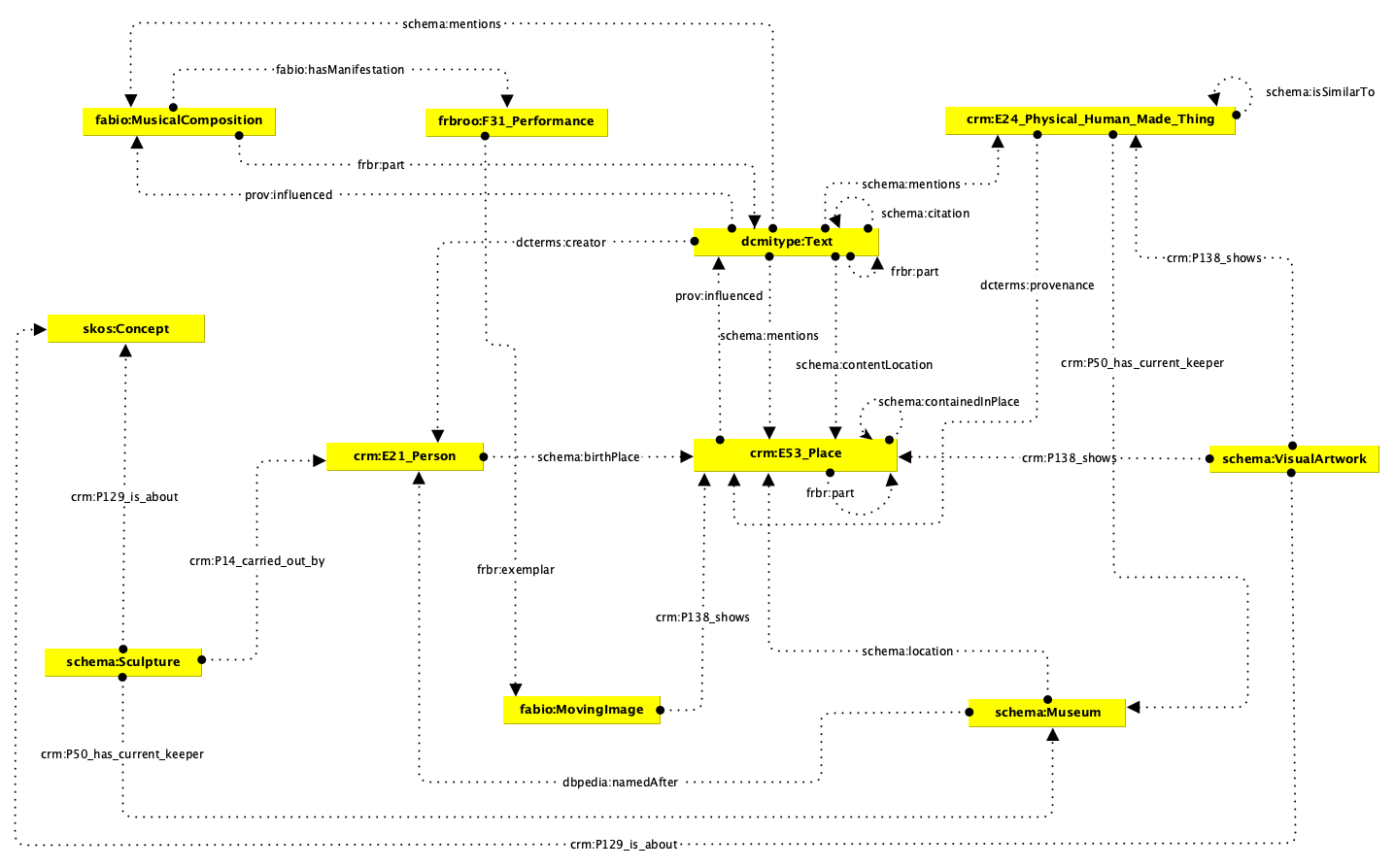
This is a model on a really high level of abstraction. It resembles an ontology. Here - as in the previous theoretical model - only the most meaningful part of the knowledge domain has been shown. Indeed, we can only see classes and relations, not all the attributes associated to the classes.
In the following list, we recap all the predicates that we used for each class when describing their instances in detail during the
CSV creation phase (in yellow the actual relations that you can see as edges in the conceptual model above):
dcmitype:Text:dcterms:creator,
dcterms:publisher,
dcterms:spatial,
dcterms:issued,
dcterms:isPartOf,
dcterms:language,
dcterms:coverage,
dcterms:description,
dcterms:identifier,
dcterms:source,
frbr:part,
schema:award,
foaf:page,
schema:contentLocation,
schema:mentions,
schema:citation,
prov:influenced;
crm:E24_Physical_Human_Made_Thing:crm:P50_has_current_keeper,
dc:rights,
dcterms:isReferencedBy,
dc:coverage,
pico:materialAndTechnique,
a-cd:hasDating,
a-cd:hasUse,
a-dd:hasTechnicalStatus,
a-cd:hasDocumentation,
dcterms:created,
a-dd:hasDesignationInTime,
a-dd:hasTechnique,
dc:format,
dc:temporal,
dcterms:provenance,
dc:creator,
schema:material,
schema:locationCreated,
schema:artMedium,
schema:image,
schema:weight,
schema:isSimilarTo;
schema:VisualArtwork:crm:P129_is_about,
crm:P102_has_title,
crm:P14_carried_out_by,
crm:P4_has_time-span,
crm:P138_shows,
crm:P45_consists_of,
crm:P70_documents,
crm:P104_is_subject_to,
crm:P43_has_dimension,
crm:P50_has_current_keeper,
crm:P55_has_current_location,
crm:P53_has_former_location;
fabio:MovingImage:crm:P138_shows,
foaf:page;
schema:Sculpture:crm:P14_carried_out_by,
crm:P50_has_current_keeper,
crm:P129_is_about,
crm:P3_has_note,
crm:P4_has_time-span,
crm:P70_documents,
crm:P55_has_current_location,
crm:P45_consists_of,
crm:P43_has_dimension;
fabio:MusicalComposition:frbr:part,
fabio:hasManifestation;
frbroo:F31_Performance:frbr:exemplar;
crm:E53_Place:schema:containedInPlace,
prov:influenced,
frbr:part;
crm:E21_Person:schema:birthPlace;
schema:Museum:dbpedia:namedAfter,
schema:location;
skos:Concept:As shown, in order to describe cultural objects in a standard-compliant and interoperable way, Vallecupola Ecosystem uses many classes and predicates taken from already existing ontologies. Models cover simple to complex metadata, enabling rich, integrable knowledge.
Here, we list all the selected ontologies with prefix, full name, namespace and short description:
When possible, entities have been aligned with authority controls. In particular, the controlled vocabularies used by the project are:
The knowledge representation strategy encompasses multiple formats and standards to ensure maximum accessibility and reusability of the cultural data. Our multi-format approach allows for different use cases and technical requirements.
Structured tabular data representations provide a straightforward and accessible format for describing exhibition items. The CSV format ensures compatibility with spreadsheet applications and database systems while maintaining human readability.
The project knowledge representation strategy is built around accessibility, reusability, and interoperability within the context of a Linked Open Data (LOD) project.
We adopted a multi-format approach to ensure that the cultural data can serve diverse audiences and technical environments.
To model the cultural heritage objects and their related entities, we created a comprehensive Excel file containing multiple sheets. Each sheet corresponds to a distinct conceptual table in the data model. The format of the tables follows a Subject–Predicate–Object structure, combining both:
This approach ensures that the metadata can be easily understood by non-experts while remaining fully compatible with LOD principles.
Given that Excel is a proprietary format, we exported each sheet into individual CSV files to enhance long-term accessibility and machine processing. CSV was chosen for its wide support across platforms, readability, and compatibility with both relational databases and RDF transformation workflows.
In total, we produced 22 CSV files:
All the files produced for the project are:
The Text Encoding Initiative (TEI) standard has been employed to encode the narrative elements of the Vallecupola story (one of our exhibition items). This approach ensures scholarly rigor and enables sophisticated textual analysis and presentation options.
After a minimal teiHeader, the content of the story has been encoded only with TEI elements that were functional both for:
ref to link some text portions to the exhibition webpages describing the items. This HTML version serves as a narrative guide for visitors, letting them read the story while exploring collection items in the order they appear in the narrative;xml:id global attribute to uniquely identify entities connected to the story node (shown in the theoretical model).Other meaningful TEI elements we used are the following:
div1, marking the structural division of the text in six main blocks (using indeed the attribute type="block");div2, marking the relevant scenes shown in the theoretical model. Since XML's tree structure required us to also mark other content with div2, we added type="scene" only to actual scenes to distinguish them from other content;rs, marking the strings referring to some mentioned objects (that are items of our exhibition);quote, marking the citation of music verses.Web-ready HTML versions of the encoded texts provide immediate accessibility for online audiences. The conversion process maintains the structural integrity of the original TEI encoding while optimizing for web presentation.
For this stage, the goal was the development of the XSLT stylesheet and the generation of the final HTML output from the TEI-encoded short story. The primary objective was to ensure that the semantically marked-up XML could be rendered as a clean, accessible HTML document, while preserving the narrative structure and interpretive elements encoded in TEI.
The TEI file was based on the
TEI P5 guidelines and included a variety of structural and semantic elements, such as
<teiHeader>, <div1>, <p>, <ref>,
<lg>, and <milestone>. As the
TEI namespace (http://www.tei-c.org/ns/1.0) was used as the default, a prefix
(tei) had to be declared and applied within all XPath expressions in the XSLT.
In the transformation process, the following tasks were carried out:
<teiHeader> and inserted into the <head> and
<body> sections of the HTML using XPath.
<div1>, <div2>, and <p> were converted into corresponding
HTML <div> and <p> tags to maintain semantic and structural clarity.
<quote>, <ref>, <lg>, and <l>—were matched to semantic
HTML equivalents: <blockquote>, <a>, and styled <div> elements.
<milestone rend="*" /> being transformed into <hr /> elements.
The transformation was done using the online tool FreeFormatter.com, which allowed the TEI XML and XSLT files to be processed together and the resulting HTML to be previewed and downloaded. This approach was chosen for its accessibility and convenience, as a local XML/XSLT processing environment is not available.
The website development process focuses on creating an engaging and accessible platform for presenting the Vallecupola Ecosystem exhibition. Our approach emphasizes user experience, accessibility, and responsive design principles.
The website is designed to serve multiple target audiences, including academic researchers, cultural heritage professionals, tourists, and local community members. Each audience has specific needs and expectations that inform the design and functionality decisions.
The HTML structure follows semantic markup principles and web accessibility guidelines. The markup provides a solid foundation for styling and interactive functionality while ensuring compatibility across different browsers and assistive technologies.
Multiple visual themes have been developed to accommodate different preferences and use cases. Each theme maintains consistency with the overall brand identity while offering unique visual experiences.
The first theme emphasizes clean, minimal design with a focus on readability and accessibility. It uses a neutral color palette and traditional typography to create a professional, scholarly appearance.
The second theme incorporates warmer colors and more dynamic visual elements to create a more engaging and inviting experience. It balances visual appeal with functional requirements.
The third theme explores contemporary design trends with bold typography and vibrant colors. It aims to attract younger audiences while maintaining professional standards.
The fourth theme focuses on high contrast and accessibility features, ensuring that the content is accessible to users with various visual needs and preferences.
The narrative structure of the website supports multiple ways of exploring the Vallecupola Ecosystem, allowing users to choose their preferred approach to discovering the content.
The chronological narrative presents the story of Vallecupola through time, allowing users to understand the historical development of the village and its cultural significance.
The story-based narrative provides a more literary approach to exploring the content, weaving together historical facts, cultural insights, and personal experiences into a cohesive narrative.
One of the main educational purposes of this virtual exhibition is to explore various types of typographic and layout styles for museum pages, as an end-of-course project for the "Information Modeling and Web technologies" course of the Master Degree in Digital Humanities and Digital Knowledge of the University of Bologna, under prof. Fabio Vitali. The contents of this exhibition site have been selected from various sources. Their publication here is not intended to be an alternative or replace their original locations, which are explicitly mentioned whenever any content is taken from there.
All copyrights and related rights on the content remain with their original owners. All copyright on the typographic and layout choices are © 2025 Vallecupola Ecosystem
From a small mountain village to a vast cultural network – this is the story we wanted to tell. Three Digital Humanities students and one Computer Engineering bachelor student from different countries exploring together how technology can reveal the hidden richness of italian cultural heritage.
